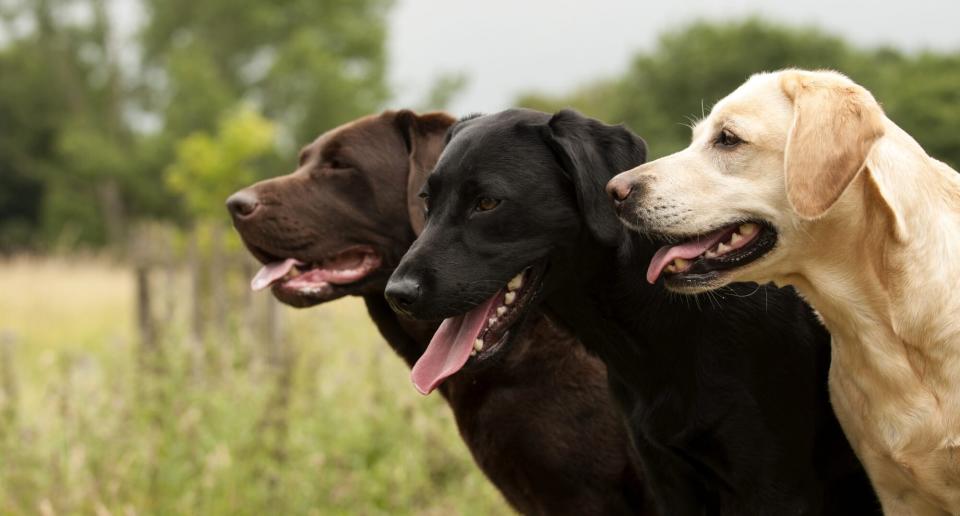Why Do Dogs Chase Their Tails?
TABLE OF CONTENTS
On This Page
Dogs Chase Their Tail to Relieve Boredom
Dogs Chase Their Tail to Seek Attention
Does Tail Chasing Indicate a Medical Condition?
Does Tail Chasing Indicate a Mental Condition?
Do Specific Dog Breeds Chase Their Tail More Often?
What Should Owners Know About Tail Chasing?
Dogs and their antics provide us endless amusement, but nothing is quite as silly as when they spin round and round, seemingly chasing their tail. Is this tail-chasing game, also called whirling, an instinct, an obsession, or something your pup finds fascinating to do?
Dogs Chase Their Tail to Relieve Boredom
"Tail chasing can be a way to relieve boredom and expend some excess energy," says Dr. Erin Katribe, a Texas veterinarian and medical director of Best Friends Animal Society, a non-profit animal welfare organization with a nationwide outreach.
Tail chasing is an activity like running around the yard or playing fetch. Experts believe it can simply be a form of play, especially after being confined inside or in a crate. When your pup finally has the freedom to run, play, and explore, you might find him engaging in this silly game.
"Tail chasing for boredom or attention-seeking might indicate that the dog needs some additional activity or enrichment in his/her daily life," says Dr. Katribe. Try including more walks, playtime, puzzles, toys, or feeders that help occupy and stimulate your pup's mental and physical health.

lizcen / Getty Images
Dogs Chase Their Tail to Seek Attention
If your dog gets a laugh from the family, applause, or a few pats on the head after his whirling display, it can turn into an attention-seeking behavior. It's like a fun party trick he pulls out when looking for some lovin'. "If it attracts your attention and excitement, this can be positive reinforcement for the dog. He, or she, will be incentivized to keep repeating the behavior to get the reward," says Dr. Katribe.
Moreover, puppies might chase their tails to explore their bodies as they learn about themselves and the world around them. A puppy notices their tail and begins turning endlessly to see what it is and try to catch it.
"There is no need for any intervention with this type of behavior– they'll grow out of it with time," says Dr. Katribe.
Does Tail Chasing Indicate a Medical Condition?
Tail chasing can also indicate a medical condition or parasites like fleas. Dogs may chase or chew their tails because of itching or pain. Dr. Katribe says if there's visible hair loss or skin damage and you notice your pup gets a hold of his tail and chews or bites on it, this warrants an evaluation by a veterinarian. Don't mistake his cute spinning as funny if it looks like there's an itch driving him crazy, for instance.
If chasing is more than sporadic or there appears to be any self-injury, then explore any medical causes with your veterinarian.
Does Tail Chasing Indicate a Mental Condition?
Anxiety in Dogs
Finally, suppose the behavior occurs in response to stress, like being alone for a while or a trip to the vet or family changes, like a beloved kid moving away to college. In that case, a behavioral disorder, such as anxiety, could be related to this chasing.
If your dog engages in tail chasing after upsetting events, that's the best indication he's using it as a form of self-soothing. "This is also something that should be discussed with a veterinarian, especially if it's very frequent or is detracting from the dog's normal daily activities," says Dr. Katribe.
Pay attention to any lifestyle changes or situations that might be contributing to anxiety in your dog to see if you can pinpoint a cause, such as adding new household members (people or pets), changes in routine, or a change in their physical environment. This change can help you and your vet identify the problem's triggers.
Compulsive Disorders in Dogs
This behavior can also be a symptom of an underlying compulsive disorder. The reason for this compulsion might vary, including past trauma or lack of activity, but it is something to discuss with your pet's veterinarian.
Do Specific Dog Breeds Chase Their Tail More Often?
Breed Factors
Genetic factors can contribute to a dog's chasing tail activity. Specific breeds, like German shepherds and terriers, are more inclined to continue this activity even after their puppy-exploration days.
Genetic Factors
Additionally, studies published by the Journal of Small Animal Practice researched why dogs chased their tails and reported a possible connection between this activity and a higher blood cholesterol level.
What Should Owners Know About Tail Chasing?
Occasional tail-chasing that's not causing injury isn't something owners need to worry about, but it could still indicate that you need to add more activity or brain games to your dog's routine. "If there's self-trauma involved, then it should definitely be stopped," stresses Dr. Katribe. Owners can try an Elizabethan collar for temporary relief until they can see a veterinarian.
Otherwise, if you're sure it's silly antics, continue to enjoy your pup's sense of humor and incorporate other games and activities into his playtime to keep him happy, busy, and healthy.

